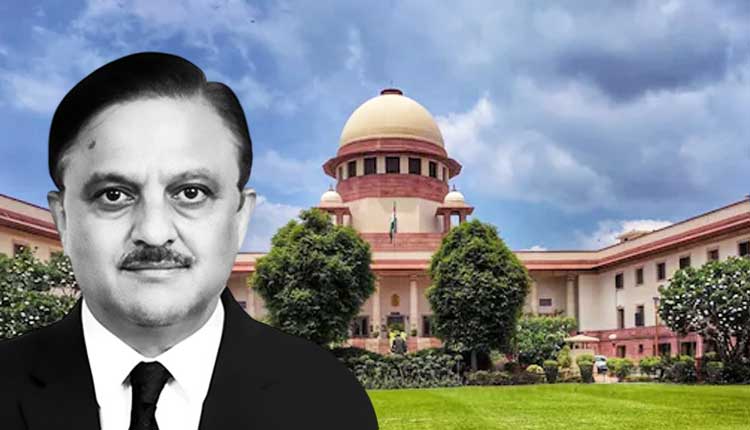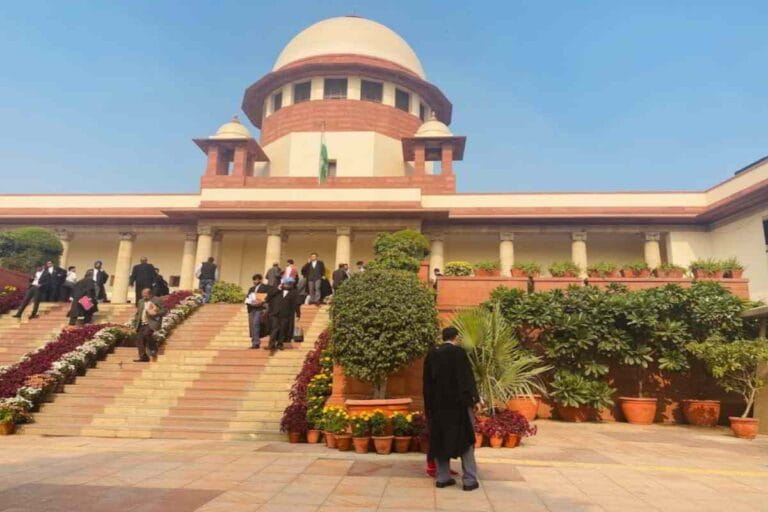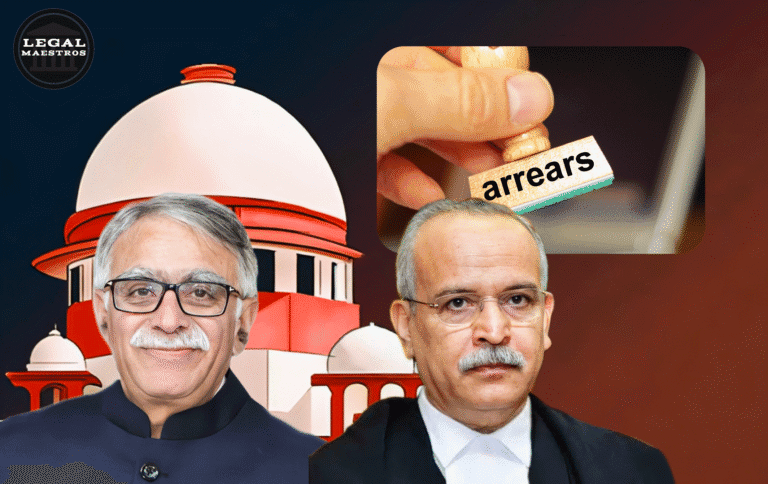
Supreme Court Led by Justice Abhay S. Oka Mandates Strict Compliance with Natural Justice Before Any Urban Demolition
Introduction
There were a lot of challenges that were brought against the decision that the Prayagraj Development Authority made to destroy private dwellings, and on April 1, 2025, the Supreme Court of India delivered a ruling that was fairly harsh.
For the purpose of writing for the bench, Justice Abhay S. Oka emphasized that even when public organizations implement urban planning laws, they are expected to respect the constitutional requirement of due process and the right to shelter, which is described in Article 21 of the Constitution.
This provision is established in the Constitution. This case highlights essential elements of the Uttar Pradesh Urban Planning and Development Act, which was established in 1973. In addition to reaffirming fundamental notions surrounding natural justice, this case also demonstrates these provisions.
For More Updates & Regular Notes Join Our Whats App Group (https://chat.whatsapp.com/DkucckgAEJbCtXwXr2yIt0) and Telegram Group ( https://t.me/legalmaestroeducators ) contact@legalmaestros.com.
Background Facts
A large number of homeowners in Prayagraj were served with a show-cause notice by the Prayagraj Development Authority (PDA) in the latter half of 2020 and the early part of 2021. The notice said that the homeowners had participated in unlawful construction, which was in violation of the Master Plan.
When it came to the procedure of affixing the notice to the buildings on December 18, 2020, there was no personal service or registered mail involved in the process. The same thing happened on January 8, 2021, when a demolition order was issued, and once again, proper service was not given.
Through registered mail, a notice was sent out on March 1, 2021, which was one day after the deadline had passed. Exactly twenty-four hours after getting the warning, on March 7, 2021, bulldozers were used to demolish the homes. As a consequence of this, the appellants were unable to submit an appeal in line with Section 27(2) since they were left without a place to reside.
Legal Framework Under the 1973 Act
The Uttar Pradesh Urban Planning and Development Act of 1973 gives development authorities the right to demolish structures that are in violation of the Master Plan. This authority allows development authorities to carry out demolitions of buildings that are in violation of the Master Plan.
According to Section 27(1), which allows the Vice-Chairman or an empowered official the authority to issue an order that orders the removal of unlawful development, the order must be issued within a period of time that is not less than fifteen days or more than forty days after the order has been served. In line with Section 27(3), which gives the Chairman a right of appeal for a period of thirty days, the Chairman has the authority to put a stop to the demolition process.
According to Section 27(4), the judgment of the Chairman is deemed to be final when it comes to disputes that are brought before civil courts. There are many types of service that are outlined in Section 43, including personal delivery, affixing, and registered mail. However, the use of affixing is only permissible in the case if the person “cannot be found” after a significant number of efforts have been made to locate them.
Service of Notices Under Section 43
It is possible to apply a notice to the individual’s last known place of residence or to send it by registered mail in line with the rules of Section 43(1)(d). This is the case in the event that the individual cannot be traced.
In accordance with the Supreme Court’s ruling, the expression “cannot be found” requires significant efforts that are carried out on a considerable number of days. In addition to a single visit, which is then followed by affixing, another visit is necessary.
In situations when the demolition of a structure has substantial effects, it is necessary to use registered post in combination with affixing. Due to the fact that the officers of the PDA did not make adequate efforts to offer personal service, as well as the fact that they did not combine registered post with affixing, neither the show-cause notice nor the demolition order were legitimate in this particular case.
Violation of Fundamental Rights
Article 21 of the Constitution states that the right to shelter is an integral component of the right to life. This right is guaranteed to all individuals. It is a violation of the rule of law, which is one of the basic pillars of the Constitution, when a demolition is carried out without appropriate warning or the opportunity to appeal the decision.
When the appellants were removed from their homes, it was midnight, and they did not have a reasonable chance to challenge the order that was issued to destroy their homes. Such arbitrary state action is a breach of both the principle of natural justice as well as the concept of the separation of powers.
This is due to the fact that administrative authorities are unable to bypass protected legislative provisions.
Principles of Natural Justice and Rule of Law
It was highlighted by Justice Oka that the standards of natural justice, which include the right to a hearing and the right to notice, are required in relation to administrative actions that have an effect on fundamental rights.
This requirement was rendered useless due to the lack of defective service, despite the fact that Section 27 has a clause that mandates a fair opportunity to explain why. In order to ensure that laws are carried out in a manner that is both expedient and efficient, the Court underscored that due process cannot be compromised.
This message is especially pertinent in light of the increasing number of instances of “bulldozer justice,” which is a term that describes the lack of judicial oversight in the process of rapid demolitions.
For More Updates & Regular Notes Join Our Whats App Group (https://chat.whatsapp.com/DkucckgAEJbCtXwXr2yIt0) and Telegram Group ( https://t.me/legalmaestroeducators )
Application of Landmark Demolition Guidelines
The ruling made reference to a decision that was handed down by the Supreme Court not too long ago in the matter of In Re: Directions in the Matter of Demolition of Structures (2024). Certain procedures for pre-demolition notifications are established as a result of this judgment.
A notice term of fifteen days, personal service by registered mail, conspicuous affixing only after an attempt at personal delivery, digital communication to district authorities, and certain content criteria in the notice are all specified by these standards.
Additionally, the notice must consist of certain content requirements. In addition, a notification is required to include certain information. The PDA was directed by the Supreme Court to strictly adhere to these guidelines in the future since it is possible that it would be subject to similar legal penalties in the future.
Supreme Court’s Findings on Illegality
Upon studying the record of the PDA, the court arrived to the judgment that the show-cause notice did not contain any true personal service efforts. Furthermore, the court found that the demolition order was not properly served and was not accompanied by the thirty-day appeal window.
Due to the fact that there were only twenty-four hours remaining before the demolition, the notice that was sent out on March 1 was not only too late, but it also fell well short of the fifteen-day minimum that is needed by law.
In light of this, it was concluded that the conduct of demolishing the building was not only illegal but also arbitrary and in violation of the constitution. The appellants were successful in overturning the challenge that had been rejected by the High Court originally.
Orders and Directions
The Supreme Court of the United States, in accordance with the regulations that were described in In Re: Directions and Section 27, canceled the demolition order that had been issued on January 8, 2021 and remanded the matter for further consideration.
In view of the fact that fast demolitions are cruel, the court ordered the Public Development Authority (PDA) to pay costs of Rs. 10 lakh for each appeal, along with interest at a rate of six percent if the appeal was delayed for more than six weeks.
In addition, the PDA was given the directive to fulfill its commitment to offer transparency by sending copies of all notices and orders to the individuals who filed the appeal. Following the illegal destruction, the appellants are still permitted to file a claim for compensation for the damages they have sustained.
Implications for Administrative Action
In the case of municipal and development agencies, this ruling sends a very clear message: the right to due process is not something that can be compromised in any way.
It is necessary of the administrative bodies that they maintain a record of real attempts made to give personal service, that they utilize registered mail, and that they allow for statutory appeal processes.
In the event that this is not done, it will lead to involvement from the court, extra costs, and liability. It is clear from this ruling that speed cannot take priority over legality, and that the constitutional rights of ordinary people place restrictions on the acts that the government may do.
Conclusion
An important decision was handed down by the Supreme Court of India in the matter of Zulfiqar Haider and Others v. State of Uttar Pradesh. This decision emphasizes the significance of natural justice, legislative conformance, and the protection of fundamental rights.
The emphatic ruling that Justice Abhay S. Oka made states that authorities are expected to observe the rule of law even when they are implementing urban planning standards. This is the case even though the decision was made by Justice Oka.
The administrative process that is followed across India will be significantly altered as a result of this verdict before the state is granted permission to demolish people’s homes. It will make certain that “bulldozer justice” is replaced with due process, and that citizens are given the opportunity to be heard and fair notice of the situation.




